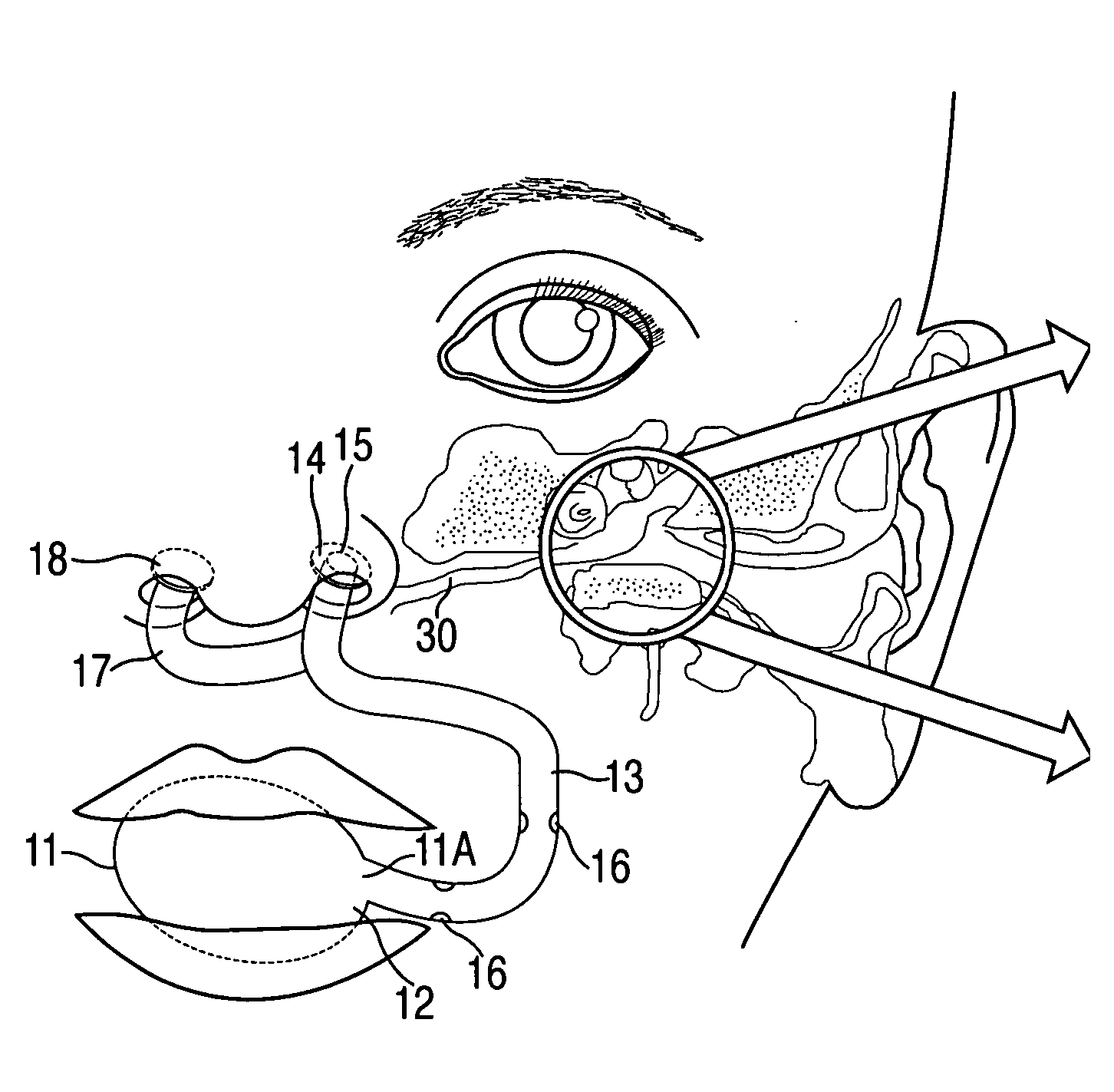Apparatus for treatment of middle ear fluid in the ears of infants and toddlers
- Summary
- Abstract
- Description
- Claims
- Application Information
AI Technical Summary
Benefits of technology
Problems solved by technology
Method used
Image
Examples
Embodiment Construction
[0027] For purposes of clarity, and not by way of limitation, illustrative views of the present invention are described with references to FIGS. 1-6. The present invention is directed towards an apparatus and method for equalizing middle ear pressure. More specifically, the present invention relates to an apparatus and method for reducing middle ear fluid and equalizing middle ear pressure and for treatment of serous otitis media with effusion in infants and toddlers. The preferred embodiments of the present invention are illustrated, respectively, in FIGS. 1A and 1B.
[0028] Apparatus 10 of FIG. 1A includes a flexible member 11 defining an air chamber 12, which may have various shapes, including a bulb. A main flexible tube 13 is connected to flexible member 11 at a chamber opening 11a of chamber 12. Pores and valves 16 may be integrated into the body of main flexible tube 13. Main flexible tube 13 may also have a nosepiece 14 with an opening 15 to permit air flow to exit at its end...
PUM
 Login to View More
Login to View More Abstract
Description
Claims
Application Information
 Login to View More
Login to View More - R&D
- Intellectual Property
- Life Sciences
- Materials
- Tech Scout
- Unparalleled Data Quality
- Higher Quality Content
- 60% Fewer Hallucinations
Browse by: Latest US Patents, China's latest patents, Technical Efficacy Thesaurus, Application Domain, Technology Topic, Popular Technical Reports.
© 2025 PatSnap. All rights reserved.Legal|Privacy policy|Modern Slavery Act Transparency Statement|Sitemap|About US| Contact US: help@patsnap.com



